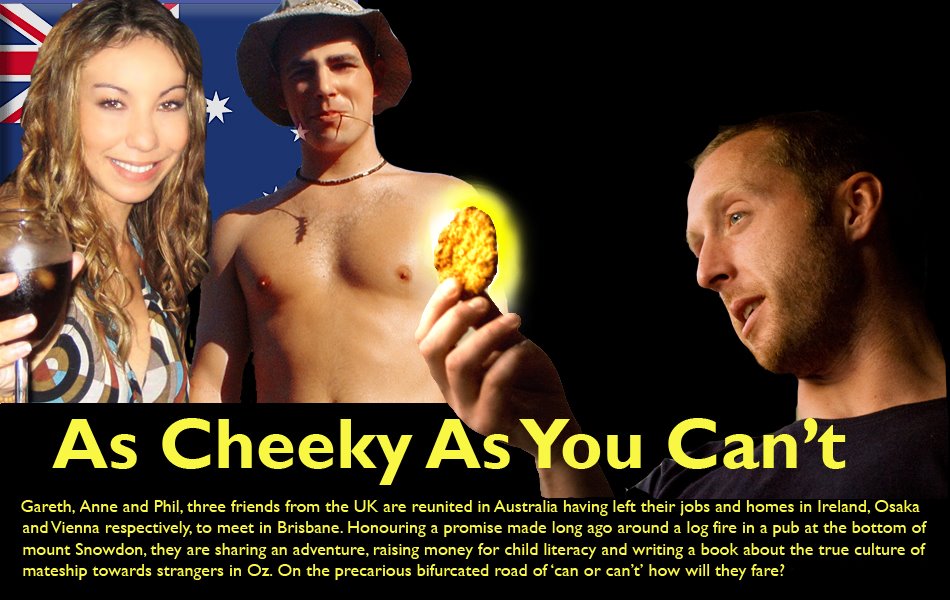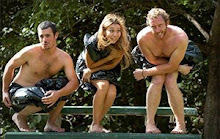The Bugle pierced the gravity of reflection as The Last Post sang out long and clear after the One Minute's Silence, with the rain falling a steady, quiet drizzle, as with bowed heads, facing the Cross of Sacrifice in Memorial Park, and the Cathedral Church of St Peter standing watch behind, those present paid their respects, a dignified tribute to those who had died while in the service of their country and listened as the Chaplain spoke
An Anzac Day onlooker walks home after the parade ends
"They shall not grow old, as we that are left grow old;
Age shall not weary them, nor the years condemn.
At the going down of the sun and in the morning
We will remember them"
'We will remember them' repeated the crowd softly, hands cupped, or behind their back.
"Lest we forget" spoke the Chaplain
'Lest we forget', repeated the crowd.
There was a shift in the mood, a collective composing, as the National Anthem 'Advance Australia Fair' was sang, muted, solemn, clear and proud. A brief pause, then the Chaplain lead the Benediction to The Glory of the Soldier
"We remember the people of ANZAC who offered their lives that we might live
We recognize their gift enables us to explore, to value all that is precious to humankind. On this anniversary day, gathered around this Cross, we are aware of those who took inspiration from the sacrifices and suffering of their God.
The strength that coursed through the hearts of the ANZACS on that Sunday morning of April 25th 1915 is expressed in the words of the "poet soldier"
After the poem was recited the service came to an end. Moving around the Cross and back up King William Street, I crossed the park, passing all the uniformed men and women, old and young, gathered, talking, smiling, shaking hands, wistfull still after the service, but not sad, respects had been paid, tributes made.
The ceremony by the Cross of Sacrifice was the culmination of the parade. The parade was a military procession of both serving and ex-servicemen and women, that passed northwards along Pulteney St, onto Flinders Street, before turning west onto North Terrace, passing the State National War Memorial there and north again when it meets King William St, and onto Memorial Park.
The procession was due for a 9.30am start. The light rain did not deter the diggers from marching, much as it didn't deter the crowds from lining the street to cheer them on. Almost 7000 soldiers and next of kin marched, with 18,000 lining the streets. ANZAC Day is a big deal. It marks the anniversary of the first major military action fought by Australian and New Zealand forces during the First World War. ANZAC stands for Australian and New Zealand Army Corps. The soldiers in those forces quickly became known as ANZACs, and the pride they soon took in that name endures to this day.
Anzac Day in Adelaide
The date, 25th of April commemorates that day in 1915 when Australia first became involved in wartime conflict, and the men of the Anzac Corps landed on the coast of Gallipoli, in Turkey. Over 8 months 8,000 men were killed as they met with fierce fire and relentless attack. The anniversary of this day became an occasion of national commemoration. Commemorative services are held at dawn, the time of the original landing, across the nation.
The marches are held also all over the country; in all cities and towns, townships and villages, a service and procession marks the day. It is a day when Australians reflect on the many different meanings of war, the lives lost and its impact on life today. The multiculturalism of Australia means that soldiers from all over the world are represented, from each and every war Australia has deployed soldiers to or fought alongside. Represented on the march were veterans now living in Australia who fought for Greece, Poland, Holland, Malta, America, Canada, France, Britain, and Serbia among others.
There were also Jeeps conveying Diggers from WWII too old to walk, and glassy eyed with emotion, as each year sees less and less of them remain; veteran Diggers from the Vietnam, Iraqui, Timor, Somalian conflicts were marching; brass bands played Waltzing Matilda; pipers played The Road to Glenrowan; Military bands rang out It's a Long Way To Tipperary; fighter planes flew overhead; the Australian Defence Force marched; the crowd shouted 'thanks, mate' and 'good on ya digger' and cheered and clapped applauding the whole time; the RAF Boy Entrants, the Womens Royal Australian Army Corps, the 1st Health Support Battalion, the Special Air Service Regiment, the 1st, 2nd, 3rd,4th, 5th,6th, 7th, 8th, and 9th Battalions of the Royal Australian Regiment marched by one after another; the energy and rhythmic military drums keeping tight each step; and the music, the noise, the sound of the beating shoes, pounding snare, steady rain, and collectivity of the emotion of it brought tears to the eyes of many, observing and taking part.
Children were told by parents what Grandad had done, where he'd been and why, a proud father watched as his son marched, replete with Grandfather's medals, honouring his memory, taking part in the march, generations united, paying respects to deeds done, lives lost and sacrifices made. After the march and the service at the Cross, there was the mood of an afterparty to the solemnity, as back over the bridge we walked, and onto Memorial Gardens where two large tents thronged with people, drinking, talking, reminiscing, laughing and acknowledging each other.
It was raining heavier by now, the drizzle had turned into a steady downpour, so I turned to go back, to a cup of coffee, in the hostel. Whatever your views on war and warfare, ANZAC Day is a very special day, and it is only one day when commemoration be made to those who died in service to their country. It is a proud day, when Australians are reminded of those who lived, and died, in their name. And it was a pleasure to have been able to witness it first hand.
Read a cheeky bit more!


















